QuestionMr. Coleman,
I understand that this question may not fall under your expertise, but it appears the other professionals are on vacation :) The question, however, is general and I'm comfortable you'll be able to get me going in the correct direction.
My wife recently bought a fancy goldfish, a bubble-cheeked goldfish, measuring approximately 1 1/2" - 2" in length. She also purchased a telescope-eyed black moor and shoved them in a tank far too small for them to live happily.
After doing some reading I ran out to the pet store to get the largest tank I could afford and the best accommodations for our little friends. The new set up is only a 10 gallon tank for the two fish (please don't scold me too badly) which has a 10 gallon tank air pump and a water filter which cycles 80 gph.
Due to the size of their tank, I'm changing the water 2 times per week with a 50% water change, using the appropriate conditioner to neutralize the chlorine and other tap water hazards.
Since I knew nothing about setting up a biofilter prior to having the fish, it is establishing; and, the toxins are remaining within a reasonable level due to the water changes.
The levels are staying around:
0-10 ppm Nitrate
0-.5 ppm Nitrite
75-150 ppm Hardness
0-.5 ppm Chlorine
80-120 ppm Alkalinity
7.2-7.8 pH
Now to the question (I'm not known for brevity.) The goldfish seem slightly distressed for the first hour or two after a water change, is there any way to decrease the amount of stress they endure?
The water temperature and chemical values are fairly consistent between the established tank and the new water.
To give an example of what I perceive the stress to be, the bubble-cheeked goldfish swims rapidly around the tank when introduced to the aquarium. (S)he also then picks at the gravel much more aggressively than during a normal day. After a few hours in the tank (s)he eventually rests on the bottom for about an hour, and then resumes normal fish behavior.
The black moor is not an active fish to begin with, but also will rest on the gravel bed for a while before venturing out about the tank again. I hope all this information helps so that we can work together on making some happy fish :)
Thanks
AnswerHi Paul,
I do not understand the part where you say "...when introduced to the aquarium". This suggests to me that you are removing the fish when you do water changes? You shouldn't do that. You should remove 25% of the water, ideally using a gravel siphon. Then you should replace that water, but be sure to add any chlorine remover to the water BEFORE putting it in the tank.
-- Ron C.
rcoleman@cichlidresearch.com
Cichlid Research Home Page <http://cichlidresearch.com>

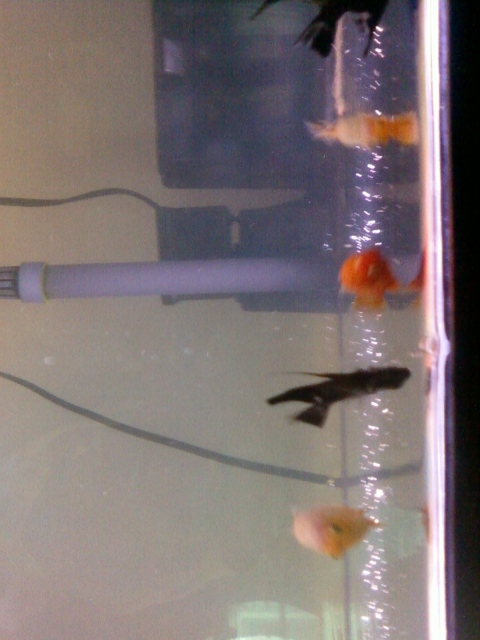 Frustrated Newer tank owner!
Questionmy tank
QUESTION: Hello! Ive had my tank
Frustrated Newer tank owner!
Questionmy tank
QUESTION: Hello! Ive had my tank
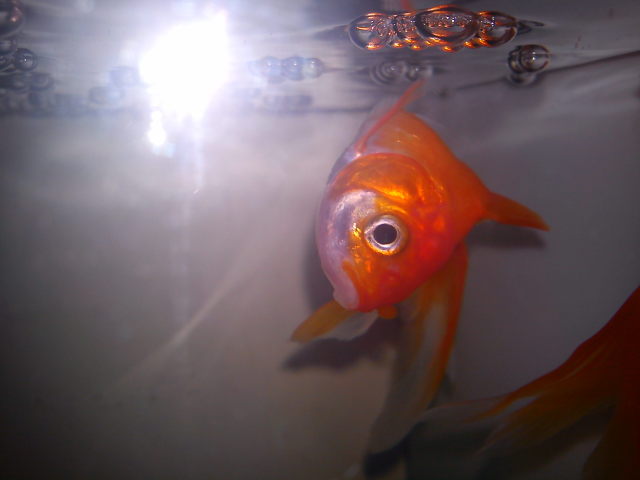 Fancy Goldfish in Distress
Question
Raf
Hello I dont know where to turn the
Fancy Goldfish in Distress
Question
Raf
Hello I dont know where to turn the
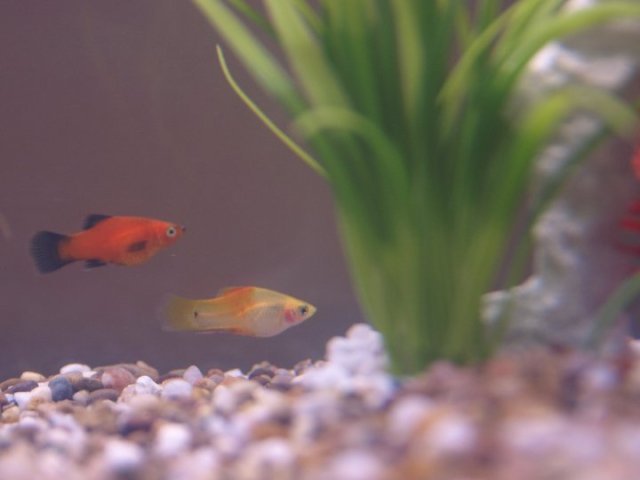 Pregnant platy? Red gills & medicine
Question
red platy
Hi there, I havent been keeping fish
Pregnant platy? Red gills & medicine
Question
red platy
Hi there, I havent been keeping fish
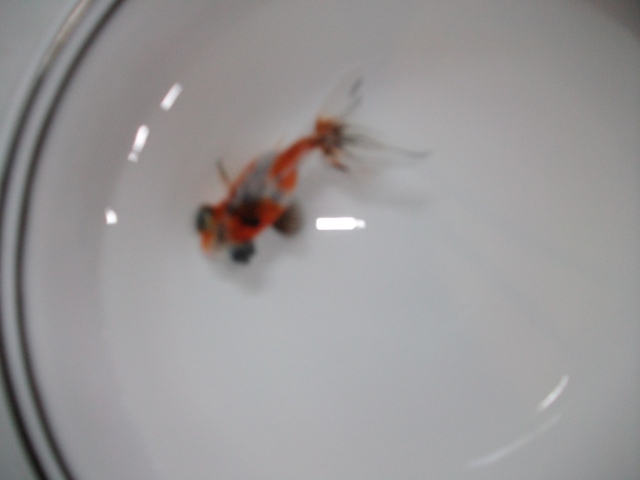 Missing Fin
Question
Herald
My Goldfish recently lost its right pec
Missing Fin
Question
Herald
My Goldfish recently lost its right pec
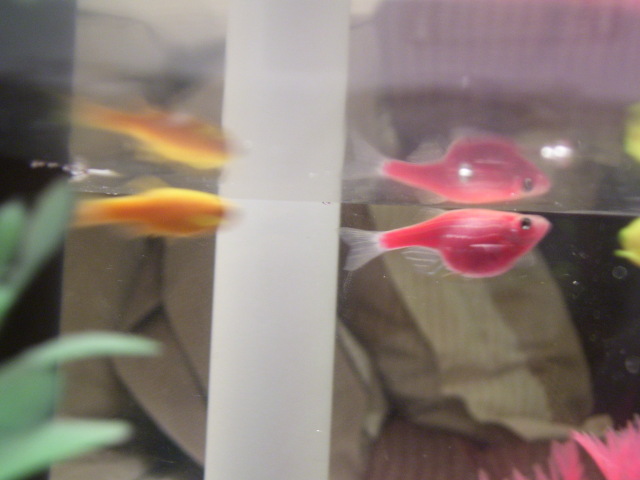 Zebra Danios (GloFish)
Question
Picture
I have several pet glofish (http://www
Zebra Danios (GloFish)
Question
Picture
I have several pet glofish (http://www